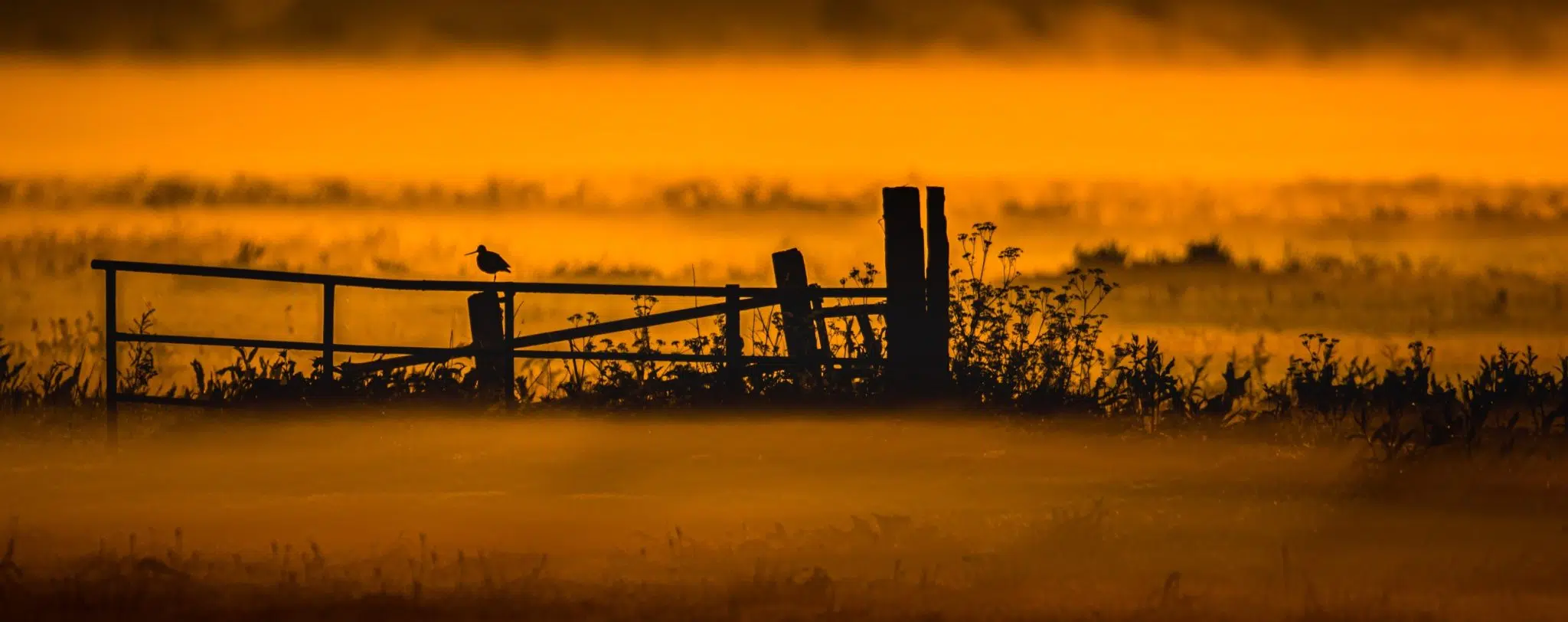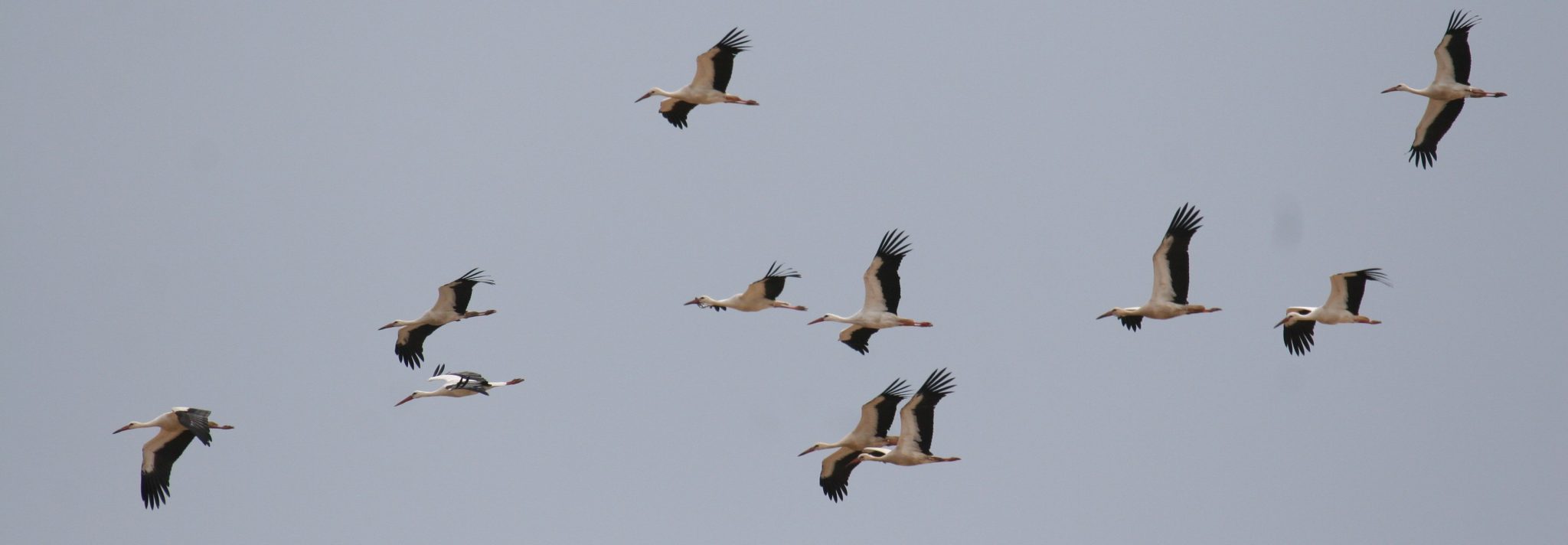Migratory bird of the month: Red-backed Shrike

Despite being classified as Least Concern by the IUCN, Red-backed shrikes are experiencing significant population declines. Habitat loss and fragmentation are the primary pressures contributing to the decline of this long-distance migratory bird.
Key info
- Latin name: Lanius collurio
- IUCN status: Least Concern [1]
- Global population: The global population size is estimated at 24,000,000-48,000,000. In Europe, the breeding population is estimated to number 7,440,000-14,300,000 pairs, which equates to 14,900,000-28,600,000 mature individuals.[2]
- Migration Route: African-Eurasian flyway
Description
- Wingspan: 23–25 cm
- Life span: Up to 6-10 years
- Distinct features: Males have a distinctive black mask and a reddish-brown back.
- Favourite food: Carnivorous; eats insects, small birds, lizards, and rodents.
- Top Speed: Up to 55 km/h
- Habitat: Open habitats with scattered trees, heaths, shrublands, and forest edges.
Flight for Survival
Despite being classified as Least Concern by the IUCN, Red-backed shrikes are experiencing significant population declines. As long-distance migrants, these birds travel vast distances along the African-Eurasian flyway to reach their wintering grounds in sub-Saharan Africa. Successful migration depends on favourable winds and weather conditions, as well as the availability of stopover sites where the birds can rest and refuel.
But these essential resting sites are increasingly threatened by degradation. Habitat loss and fragmentation are the primary pressures contributing to the decline of Red-backed Shrikes. Agricultural intensification converts diverse habitats into monocultures, destroying the shrikes’ nesting and hunting grounds. The abandonment of low-intensity agricultural practices, such as maintaining hay-meadows, further exacerbates the loss of suitable habitats for Red-backed Shrikes. The increased use of pesticides in farming reduces the abundance of insects, a primary food source for shrikes, and poses a risk of direct poisoning. Afforestation, or the conversion of open landscapes into forests, also limits the availability of suitable environments for these birds. Adverse weather conditions, such as prolonged periods of drought, and threats like illegal killing in the Mediterranean region pose further difficulties for the shrikes both along their migration routes and in their wintering habitats.

BirdLife’s work
Our BirdLife Partners are dedicated to protecting Red-backed shrikes and their habitats through focused conservation and restoration efforts. They promote good land management practices and conduct monitoring programs to track population trends of Red-backed shrikes and other migratory birds. These efforts aim to preserve habitats, raise awareness about the threats these birds face, and implement measures to mitigate these threats.
Together with our Partners, we are also committed to stopping the illegal killing of birds in the Mediterranean, where many birds are unlawfully shot, trapped, or poisoned. To learn more about our efforts to combat illegal bird killing, visit our dedicated page on this issue.
Given that agriculture poses a significant threat to the Red-backed shrike, we are diligently to reform the Common Agricultural Policy (CAP), the EU’s farming subsidies system. Currently, this system incentivizes farm size over environmental stewardship. We are advocating for a policy overhaul to ensure a harmonious coexistence between nature and farming.
Interesting facts
Interesting food storage methods
Red-backed Shrikes are known for their impressive hunting skills, often seen perched on exposed branches or wires, diligently scanning for prey. Interestingly, they impale their catch on thorns or barbed wire, essentially creating a pantry of food reserves for later meals…tasty? But it isn’t just about storing food; it also serves as a social signal such as mate selection and for marking territory.

True warriors…with a common sense
Beware! The Red-backed shrike is fearless when it comes to defending its territory. If you approach their nests, these courageous little birds won’t hesitate to confront you or any other larger predators. Interestingly, their behavior varies depending on the intruder. While they commonly attack the European jay (Garrulus glandarius), they remain passive in the presence of the Eurasian magpie (Pica pica). This suggests that shrikes can evaluate not only the threat level posed by the intruder but also the potential benefits or drawbacks of engaging in active defence. [3]
Disappointed Common Cuckoo
The Red-backed shrike was once a common host for the Common cuckoo (Cuculus canorus), a brood parasite known for laying its eggs in the nests of other bird species. But over the last five to six decades, there is evidence from Central Europe that the occurrence of cuckoo chicks in shrike nests has become scarcer, and that in some locations they have disappeared completely. There are several hypotheses why this happened, but most likely the Cuckoo abandoned this host species because it had lost in the arms race; the Red-backed shrike evolved the ability to identify cuckoo eggs and reject them, rendering cuckoos less successful in using shrike nests for their own offspring. Red-backed shrike also exhibit an especially high aggression against Cuckoos, which has been proved in scientific experiments. [4]

[1] https://www.iucnredlist.org/species/22705001/110988087
[2] BirdLife International. 2017. Lanius collurio (amended version of 2016 assessment). The IUCN Red List of Threatened Species 2017: e.T22705001A110988087. https://dx.doi.org/10.2305/IUCN.UK.2017-1.RLTS.T22705001A110988087.en. Accessed on 02 May 2024.
[3] Němec, Michal & Fuchs, Roman. (2013). Nest defense of the red-backed shrike Lanius collurio against five corvid species. acta ethologica. 17. 1-6. 10.1007/s10211-013-0175-z.
[4] Lovászi, Péter & Moskát, Csaba. (2004). Break-down of arms race between the Red-backed Shrike Lanius collurio and Common Cuckoo Cuculus canorus. Behaviour. 141. 245-262. 10.1163/156853904322890843
Cover photo and pictures in the article by Yves Adams
You might be interested in:
 | Stichting BirdLife Europe gratefully acknowledges financial support from the European Commission. All content and opinions expressed on these pages are solely those of Stichting BirdLife Europe. The European Commission is not responsible for any use that may be made of the information it contains. |









